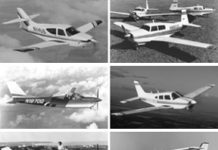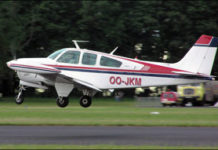Piper Comanche - search results
Light Retract Safety
Cherokee 235/Dakota
Used Aircraft Guide: Beech 33 Debonair/Bonanza
Letters: August 2000
Light-Light Twins
In your article about light-light twins in the June issue, your chart didnt contain the most important element: Single-engine climb rate.
You mentioned Pipers book value of 240 FPM for the Piper Apache.Was that for the Apache 150 ?I know they also built the Piper Apache 160 and a 235 that became the Aztec. What about the other twins, Travel Air, Dutchess, Comanche and Cougar?
Because all the engines of the light twins have 2000-hour TBOs, a single-engine rate-of-climb comparison would be more meaningful to your readers.
Egon Grothe
Brookfield, Wisconsin
Youre right, we should have provided more information on single-engine...
PA-28 Warrior
Used Twin Market: Is It Time to Buy?
Range Extenders: Going the Distance
Five Light Twins
And neither would a light-light twin of the sort we analyzed in the June issue. The next rung on the step-up ladder is the light non-cabin class twin, airplanes that are a bit more expensive to buy and operate than light-light twins but carry more and eke a few more knots.
These are big airplanes with performance and handling that are less tolerant of an incompetent pilot than the light-light twin. Before considering one, we encourage the prospective owner to keep two ideas in mind:...











